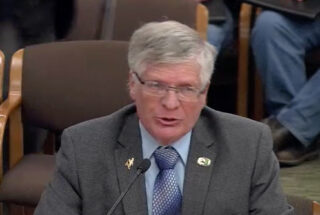
One of the best ideas for improving transportation in Oregon is glaringly absent from the state’s transportation funding package: Better passenger and freight rail lines between Portland and Eugene.
At one of four hearings on House Bill 2017-3 held at the State Capitol this week, representatives from the Association of Oregon and Rail Transit Advocates took the opportunity to remind lawmakers about this fact.
While the package being debated includes over $900 million in earmarks for highway expansions in the name of “congestion relief,” advocates with AORTA feel like the bill will cause Oregon to fall even further behind our west coast neighbors.
“Go big or go home,” is how AORTA rep Dan McFarling began his testimony in front of the Joint Transportation Preservation and Modernization Committee on Monday. “Rail programs in Washington and California are going big. We are treading water.”
Advertisement
McFarling then detailed Washington’s purchase of eight new locomotives that can go 125 mph and the new trail station and passenger-only tracks being built in Tacoma. Washington, he added, already has double-tracks for its entire railway corridor and new investments will add a third track soon. Oregon by comparison operates on a single-track line — which means freight and passenger cars compete for space (with passengers often losing out).
Referring to Oregon as “the missing link on the west coast,” McFarling said the plans to expand freeways and tax low-emission vehicles are actions that take the state in an opposite direction from our climate change goals.
Instead of trying to fix congestion by improving the thing that causes it, McFarling told lawmakers, “The best way to alleviate congestion is to entice motorists out of their cars and onto modern and efficient passenger rail… Adding road capacity in urban areas encourages sprawl and increases congestion and maintenance costs. That is a receipe for long-term budget disaster.”
Senator Betsy Johnson asked McFarling a follow-up question after his testimony.
If we add capacity, where does AORTA stand on this bill?” she said. “Much of the bill is focused on three big road projects in the metro area.”
“That is not approprate in my opinion,” he replied.
Then, perhaps in an attempt to catch a flaw in his proposal, Johnson asked McFarling if he would support counties using eminent domain to acquire the land to expand the rail corridor. “Most of corridor between Portland and Eugene is owned by railroad companies,” McFarling replied, “and most of it is 100 feet wide [offering plenty of width for expansion].”
While freeway expansion was the top priority for lawmakers in the bill, there’s no money for rail transit and that’s unlikely to change even after McFarling’s persuasive testimony (the public transit section of the bill was drafted with a stipulation that it cannot be used for light rail).
Stay tuned for more coverage as the final version of the bill becomes available next week.
— Jonathan Maus: (503) 706-8804, @jonathan_maus on Twitter and jonathan@bikeportland.org
BikePortland is supported by the community (that means you!). Please become a subscriber or make a donation today.
